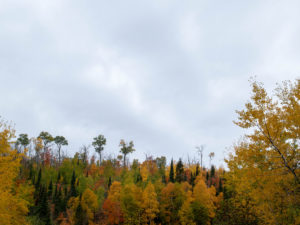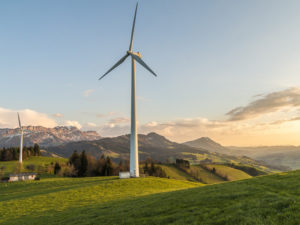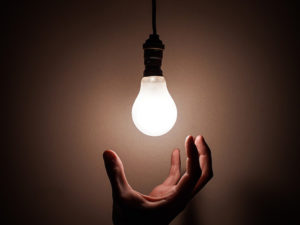Learn What Powers Your Electricity
How Power Comes Into Our Homes
Virtually all homes in the Duluth area receive their electricity from Minnesota Power, which generates electricity from six main sources across the northern Minnesota region: hydro, coal (thermal), natural gas, wind, biomass, and solar (for more details see Minnesota Power’s Generation Mix of Fuels). Hydro sources include the Thomson Hydro, on the St. Louis River in Jay Cooke State Park, which is the largest hydro facility in the state with a production capability of 70 megawatts. Coal generation includes the Boswell Energy Center, Minnesota Power’s largest power plant, located in Cohasset, MN; although they are set to eliminate coal from the mix by 2035. Natural gas comes from the Laskin Energy Center, converted from taconite processing. Wind energy comes largely from MN Power’s Bison Wind Energy Center (500 megawatts in total) in Oliver and Morton counties in south-central North Dakota along with a smaller amount from Taconite Ridge Wind Energy Center near Mountain Iron, MN. Two biomass facilities are currently in operation, including the Hibbard Renewable Energy Center on the waterfront in West Duluth. Minnesota Power also generates utility-scale solar at installations such as the Wrenshall Array and the Rice Lake Road Array, with more facilities in the works. Outside of Duluth, to understand more about how US homes receive electricity from their power providers see the National Academy of Sciences: Electricity Page.
Minnesota Power has 8,742 miles of electric transmission and distribution lines with 164 substations. For more information about the transmission lines including Two Islands, the Duluth Loop, Great Northern Transmission Line, American Transmission Co., and CapX2020 see Minnesota Power’s Transmission page.
Regarding energy storage, while Minnesota Power doesn’t have a large facility, they signed a long-term power purchase agreement in 2011 with Manitoba Hydro that required Manitoba Hydro to sell 250 megawatts of electricity to Minnesota Power for 15 years beginning in 2020, including a “wind storage” provision that entitles Minnesota Power to transmit power northward from its wind farms in North Dakota when wind production is high or electric loads are low (see more here).
Duluth’s Mix
As a city, Duluth currently receives its energy from city-wide electric and gas systems (for more information see How it Works: Duluth Energy Systems). Energy production accounts for the majority of Duluth’s greenhouse gas emissions at 37%. (see our About page for more details). Duluth’s City Energy Plan sets the goal to decarbonize the city’s municipal operations towards an 80% reduction of the city’s emissions (2008 baseline) by 2050.
Comparing Minnesota
The US Energy Information Administration’s Profile on Minnesota highlights the important role Lake Superior plays in energy transport, connecting the Ports of Duluth and Superior to worldwide shipping—from coal mined in western states to imported wind turbines manufactured abroad. Minnesota, as highlighted by the NY Times Interactive States Electricity Graph, has been powered predominantly by coal as the largest source of electricity generation for over two decades, though its share is declining considerably while wind and natural gas have risen in generation. Minnesota also has a law requiring utilities to sell increasing amounts of electricity from renewable sources, with a requirement of 25 percent of total sales by 2025 (see more here). To explore how Duluth’s actions compare with other Minnesota cities, see the MN GreenStep Cities list.
Taking Action
To reduce our emissions, we need to move our electricity production from coal and natural gas to renewables while supporting the development of community-owned, locally produced clean energy. There are a variety of actions that individuals, businesses, and organizations can do, which are available on the Energy Production Actions page.
Did you take this action? Report it!
Help us show our collective community impact by reporting that you took this action.



